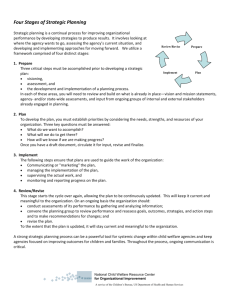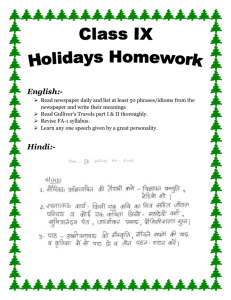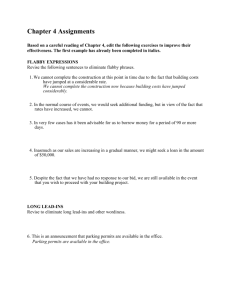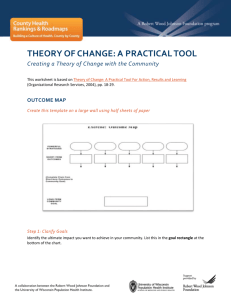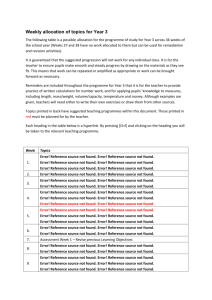Marilee P. Ogren PhD Image removed due to copyright restrictions.
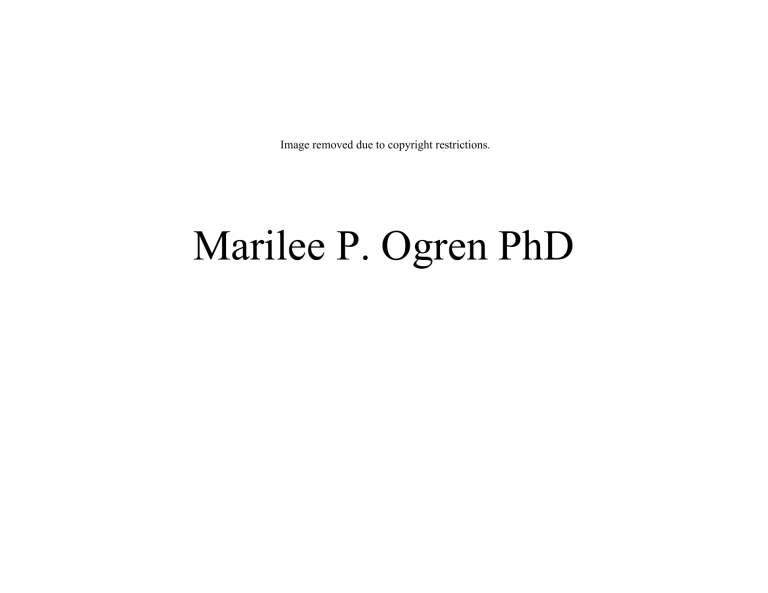
Image removed due to copyright restrictions.
Marilee P. Ogren PhD
Why am I here?
• MIT alums wish they were better at scientific communication
• To help with your summary essays
• To contribute to your writing grade
What is Scientific Writing?
Image removed due to copyright restrictions.
Precise, concise, objective report of research data collected according to the scientific method…
And an intellectual journey that takes time and patience.
Time to Convert…
Image removed due to copyright restrictions.
…..ready for professional writing?
Old Habit New Habit
Begin writing a paper at
2AM that’s due at 9AM
Write a first draft early, get feedback, and revise it more than once
Use language that sounds scholarly, serious, and smart
Meet the page count
Use language that exactly suits your content
Write to communicate
What are Some Methods for
Good Scientific Writing?
Model your writing after someone in your field who is an especially good writer .
Consult Texts on Scientific Writing.
Image removed due to copyright restrictions.
Cover of Alley, Michael. The Craft of
Scientific Writing, 3 rd ed .
New York,
NY: Springer, 1998.
Image removed due to copyright restrictions.
Cover of Day, Robert. How to Write and Publish a Scientific Paper, 5 th ed .
Cambridge, UK: Cambridge University
Press, 1998.
Develop an Outline
Image removed due to copyright restrictions.
Outlines force you to:
- establish the
- develop a scope of your document point of view
Cover of Perelmen, Leslie and
Edward Barrett. The Mayfield
Handbook of Technical and
Scientific Writing. Burr Ridge,
IL: McGraw-Hill Higher
Education, 1997.
- partition material
- sequence your topics
- develop a writing strategy (even if you don’t have an outline, you need a strategy).
Outline can be used to generate feedback , provide the subject headings and topic sentences for your paper.
Work out a general plan first, and then make the outline more specific.
The Mayfield Handbook: Section 1 .
5 .1 http://web.mit.edu/writing/temp2/home.htm
When Publishing in a Peer-Reviewed Journal
Read the Guide to Authors e.g., J. Bac., Materials and Methods
Image removed due to copyright restrictions.
Experienced Scientific Writers…
Seek Feedback
– peer-edit
– self-edit (after a long enough delay)
– expert-edit
Expect to learn by writing as well as to inform.
Revise ,
revise
, revise , revise, revise , revise
, revise
, revise
, revise
, revise
, revise
, revise
, revise
, revise
.
Consider Three Aspects of Writing Style
Structure is Revealed in:
Organization (backbone)
• Headings, Subheadings, Topic sentences reflect your writing strategy
Heading and Subheadings
STRUCTURAL ORGANIZATION is hidden in a long list of headings without secondary headings
Performance of the Solar One Receiver
Introduction
Steady State Efficiency
Average Efficiency
Start-Up Time
Operation Time
Operation During Cloud Transients
Panel Mechanical Supports
Tube Leaks
Conclusion
Performance of the Solar One Receiver
Introduction
Receiver’s Efficiency
Steady State Efficiency
Average Efficiency
Receiver’s Operation Cycle
Start-Up Time
Operation Time
Operation During Cloud Transients
Receiver’s Mechanical Wear
Panel Mechanical Supports
Tube Leaks
Conclusion
Topic Sentences
Image removed due to copyright restrictions.
They’re more important than you realize
Readers rely on a topic sentence as if it were a “title” for the paragraph
Structure is Revealed in:
√
Organization (backbone)
• Headings, Subheadings, Topic sentences reflect your writing strategy
Ordering / Depth
• Establish emphasis
Transitions
• Link ideas
Image removed due to copyright restrictions.
Language: Needless Complexity
• Familiarization (n)
• Has the functionability (n)
• Utilization (n)
• Facilitate (v)
• Utilize (v)
• Aforementioned (adj)
• Firstly, secondly, thirdly (adv)
• Heretofore
• familiarity
• can function
• use
• cause
• use
• mentioned
• first, second, third
• previous
Language: Needless Words
• Already existing
• At the present time
• Basic fundamentals
• Completely eliminate
• Continue to remain
• Currently being
• Empty space
• Had done previously
• Introduced a new
• Mix together
• Existing
• At present
• Fundamentals
• Eliminate
• Remain
• Being
• Space
• Had done
• Introduced
• Mix
• Never before
• None at all
• Now at this time
• Period of time
• Separate entities
• Start out
• Write out
• Still persists
• In order to
Language: Needless Words
• Never
• None
• Now
• Period
• Entities
• Start
• Write
• Persists
Language: Weak Versus Strong Verbs
• Made the arrangement for
• Made the decision
• Made the measurement of
• Performed the development of
• Arranged
• Decided
• Measured
• Developed
Language: Passive Versus Active Voice
• The voltage was displayed by the oscilloscope.
• The oscilloscope displayed the voltage.
• The feedthrough was composed of a sapphire optical fiber,
• The feedthrough contained a sapphire optical fiber,
• which was pressed against the pyrotechnic
• that was used to confine the charge.
• which pressed against the pyrotechnic
• that contained the charge.
Vigorous Writing is Concise
Image removed due to copyright restrictions.
Cover of Strunk, William and E. B. White. The Elements of Style.
New York, NY: Penguin, 2005.
GOALS FOR SCIENTIFIC WRITING
Image removed due to copyright restrictions.
Structure
• Apparent : Headings, subheadings, and topic sentences are easily identified and reflect your writing strategy.
• Instructive : The paper’s headings, subheadings, and topic sentences organizes the reader’s thinking (can serve as a summary of the content when converted to an outline).
• Appropriate: Structural complexity matches the complexity of the content.
Language
• Concise : Sentences are succinct, containing no extra words.
• Precise : Word choice reflects a thoughtful process.
• Engaging : Sentences are written in active voice with strong verbs and apt adjectives.
GOALS FOR SCIENTIFIC WRITING
Image removed due to copyright restrictions.
• Illustrations
– Appropriate : The choice of tables versus figures suits the data and would not be better expressed as text.
– Well designed : Illustrations are readable and attractive.
• Form
– Correct grammar, spelling, and punctuation.
– Correct formatting .
Scoring System
√
√
-
-
0
+
√
+
Thoroughly superior work. A model of good scientific writing.
Good work. Requires only minor improvements in any of the following areas: organization of ideas; economy of expression; diction (word choice); grammar/punctuation/ spelling.
Acceptable work. Requires moderate revision in one or more of the areas above.
Acceptable but rough work. Requires substantial revision in all areas.
Unacceptable work.
Assignment not handed in.
Please read
Writin
g
Readable Prose
By
Amin S. Bredan & Frans van Roy
END
